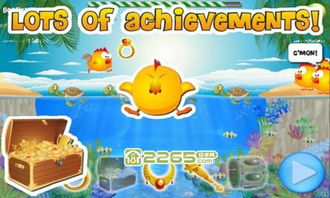Content:
Embarking on a fishing and cycling adventure can be an exhilarating experience, combining the tranquility of the water with the exhilaration of the open road. However, one crucial aspect that often goes overlooked is the technique of dragging fish effectively, especially when you're on the move. Whether you're a seasoned angler or a cycling enthusiast looking to add a bit of fishing flair to your ride, mastering the art of trolling can significantly enhance your outdoor experience. Below, we delve into the essential tips for perfecting the drag technique for both fishing and cycling.
Understanding Trolling
Before we dive into the specifics of dragging fish while cycling, it's important to understand the basics of trolling. Trolling is a fishing technique where a lure or bait is slowly reeled through the water, often with the help of a motor or by hand. The idea is to mimic the natural movement of prey, attracting fish to strike. When combined with cycling, it adds an extra layer of excitement and challenge to the traditional fishing experience.

Essential Gear for Trolling While Cycling
To begin, ensure you have the right gear for both activities. Here's a list of must-have items:
- Trolling Rod and Reel: Choose a rod and reel that are designed for trolling. They should be durable and capable of handling the weight of your lure or bait.
- Trolling Motor: A compact and portable trolling motor is essential for maintaining a steady speed while cycling.
- Lures and Bait: Select lures or bait that are known to attract the fish species you're targeting.
- Cycling Gear: Ensure your bicycle is equipped with the necessary gear, such as a sturdy rack for your fishing gear and a comfortable saddle for long rides.
- Safety Equipment: Always carry safety gear, including a helmet, reflective clothing, and a first aid kit.
Techniques for Dragging Fish While Cycling
Now that you have the right gear, let's explore some techniques for effectively dragging fish while cycling:
Start with a Steady Pace: When you're cycling and fishing, it's crucial to maintain a steady pace. This allows your lure or bait to move in a natural, lifelike manner. Avoid sudden stops or changes in speed, as this can spook the fish.
Adjust Your Trolling Motor: Use your trolling motor to maintain a consistent speed. Experiment with different speeds to see what works best for the fish you're targeting. Remember, the slower you go, the more likely you are to catch fish.
Keep Your Line Taut: A taut line is more likely to detect bites and allow you to set the hook quickly. However, be careful not to pull too hard, as this can break your line or scare away the fish.
Use the Right Lure or Bait: Different fish species are attracted to different types of lures and baits. Research the species you're targeting and choose the appropriate lure or bait. Remember, the more realistic your lure or bait looks, the better your chances of catching fish.
Be Patient: Trolling can be a waiting game. Be patient and don't get discouraged if you don't catch anything right away. Fish may take time to notice your lure or bait, especially if you're cycling through new territory.
Practice Your Casting: Casting while cycling requires practice. Try to cast in a straight line and avoid casting too far, as you'll need to keep your lure or bait within reach while you're moving.
Monitor Your Equipment: Keep an eye on your fishing gear and make sure everything is in working order. Check your line for nicks or kinks, and replace your lure or bait if it's worn out.
Safety Tips for Trolling While Cycling
Safety should always be your top priority, especially when combining two activities like fishing and cycling. Here are some safety tips to keep in mind:
- Always Wear a Helmet: This is a non-negotiable for cycling, as it can protect you from serious head injuries in the event of an accident.
- Stay Visible: Wear reflective clothing and use lights on your bicycle if you're fishing at dawn or dusk.
- Be Aware of Your Surroundings: Stay alert for other cyclists, pedestrians, and wildlife while you're on the road.
- Know Your Limits: If you're not comfortable with the combination of fishing and cycling, consider taking it slow and practicing in a controlled environment before heading out on the open road.
In conclusion, mastering the art of dragging fish while cycling requires patience, practice, and the right gear. By following these essential tips, you'll be well on your way to a successful and enjoyable fishing and cycling adventure. Happy fishing and cycling!












